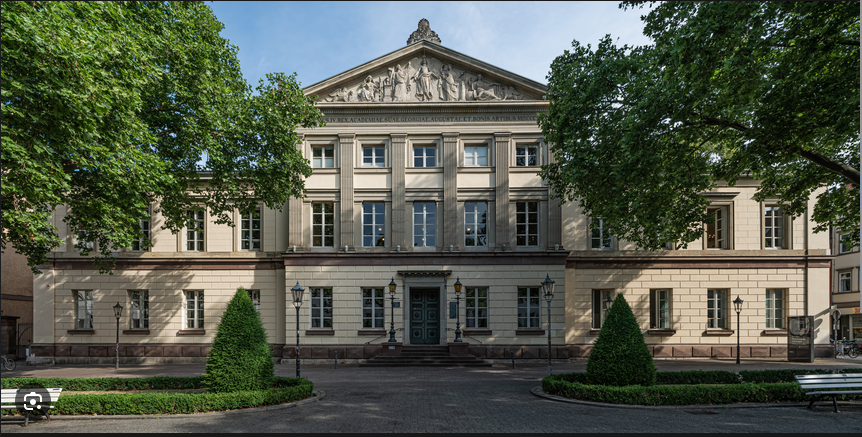Speaker
Description
The importance of a reliable agricultural trade system becomes especially apparent in times of crisis. Trade on well-integrated international markets can help to buffer shocks such as those experienced in 2007/08 and more recently following Russia’s invasion of Ukraine. However, past research has suggested that international markets for important agricultural staples are less than perfectly integrated, and that governments respond to international price surges by implementing measures such as export restrictions or changes in tariffs that insulate their domestic markets from international price surges.
Increasing insulation may appear to be a rational response to individual governments as they aim to protect domestic consumers from food price inflation. However, by reducing the buffering capacity of international markets these responses can create a collective action problem, fuelling a vicious circle of further increases in international prices, additional trade policy responses and, ultimately, increased food insecurity, especially in low-income importing countries (MARTIN and ANDERSON, 2011). Hence, it is important to understand whether insulation does indeed increase when international prices surge, and if so, what is causing this increase. The objective of this study is to generate empirical evidence on these questions.
The analysis is based on a total of 503 monthly domestic price series for wheat (n_w=56), yellow maize (n_ym=78), white maize (n_wm=152) and rice (n_r=217) obtained from the FAO’s Global Information and Early Warning System (GIEWS FAO, 2023) and the Famine Early Warning Systems Network (FEWS NET, 2023). Depending on availability we use price series beginning as early as January 2004 and no later than January 2014, and ending in June 2023 to cover the 2007/2008 food price crisis and price surge triggered by Russia’s invasion of Ukraine. As international prices $P^I$, we use US No. 2 SRW fob Gulf for wheat, US No. 2 Yellow for yellow maize, South Africa Randfontein for white maize, and Bangkok Thai 100 B for rice. We use the Baltic Dry Index as a proxy for transport costs.
Our empirical approach uses these data to estimate the basic long-run relationship:
$$P_t^D=\beta_0+\beta_1 P_t^I+\beta_2 TC_t+u_t$$ (1)
where $\beta_1$ and $\beta_0$ capture ad valorem and specific tariffs, respectively. The effects of changes in transport costs TC are captured by $\beta_2$. However, if countries do respond to increasing $P^I$ with measures that insulate domestic prices, then $\beta_0$ and $\beta_1$ will not be constant over time and equation (1) will be misspecified. To account for this, we depart from earlier studies that assume a time-invariant relationship between $P^D$ and $P^I$ (e.g. MARTIN and MINOT, 2022) and estimate the following smooth-transition model proposed by SAIKKONEN and CHOI (2004):
$$P_t^D=\beta_0^L+\beta_1^L P_t^I+(\beta_0^H+\beta_1^H P_t^I )*g(P_t^I )+\beta_2 TC_t+u_t$$ (2)
where the superscripts L and H refer to low- and high-price regimes, respectively, and
$$g(P_t^I )=(1+e^{(-\gamma (P_t^I-c)) })^{-1}$$ (3)
The function g(∙) in equation (3) ranges from 0 for low values of $P_t^I$ to 1 for high values. When g(∙) = 0, the long-run relationship between $P_t^I$ and $P_t^D$ in equation (2) is $P_t^D=\beta_0^L+\beta_1^L P_t^I+\beta_2 TC_t$, which we refer to as the low-price regime. When g(∙) = 1, the long-run relationship becomes $P_t^D=(\beta_0^L+\beta_0^H)+(\beta_1^L +\beta_1^H)P_t^I+\beta_2 TC_t$, which we refer to as the high-price regime. The coefficient c marks the mid-point of the transition between the regimes where g(∙) = 0.5, and the relationship between $P_t^I$ and $P_t^D$ is an equal mixture of the low- and the high-price regimes. The coefficient $\gamma$ determines the speed with which g(∙) transitions from 0 to 1 as $p_t^I$ increases.
Our results confirm that the insulation of domestic from international markets for staple grains increases when $P^I$ increases sharply as was the case in 2007/08 and more recently in 2022. The smooth transition model provides evidence that in the high-price regime $P^D$ becomes less responsive to changes in $P^I$ (i.e. the elasticity of international to domestic price transmission falls) for all of the grains that we study. The regime switch from lower to higher insulation happens on average at a world market price of roughly 285$/t for wheat, 260$/t for white maize, 275$/t for yellow maize and 555$/t for rice. There is considerable variation in these results among countries. We demonstrate that this variation is partially due to the fact that some of the domestic price series are recorded at the wholesale prices, while others are recorded farther along the chain at the retail level. We also find that the critical $P^I$ levels that trigger increased insulation of $P^D$ from $P^I$ are generally higher for exporting than for importing countries, as might be expected.
Interestingly, we do not find evidence that border measures are being adjusted to generate the increased insulation that we observe during price surges. Analysis with data on trade policy changes from the Global Trade Alert data base and annual tariff data from UNCTAD-TRAINS does not reveal any temporal correlation between the increases in insulation that we observe and changes in trade policy measures such as tariffs. This suggests that countries are using other, non-border measures such price controls or the release of public stocks to insulate domestic prices.
Keywords
Price transmission, food prices, trade policy, food security
FEWS NET (2023): Staple Food Price Data Famine Early Warning Systems Network. In: https://fews.net/staple-food-price-data.
GIEWS FAO (2023): Food Price Monitoring and Analysis Tool V4. In: https://fpma.fao.org/giews/fpmat4/#/dashboard/home.
MARTIN, W. and N. MINOT (2022): The impacts of price insulation on world wheat markets during the 2022 food price crisis. In: Australian Journal of Agricultural and Resource Economics 66 (4): 753–774.
MARTIN, W. J. and K. ANDERSON (2011): Export Restrictions and Price Insulation During Commodity Price Booms. World Bank Policy Research Working Paper No. 5645.
SAIKKONEN, P. and I. CHOI (2004): Cointegrating smooth transition regressions. In: Econometric Theory 20 (02).

